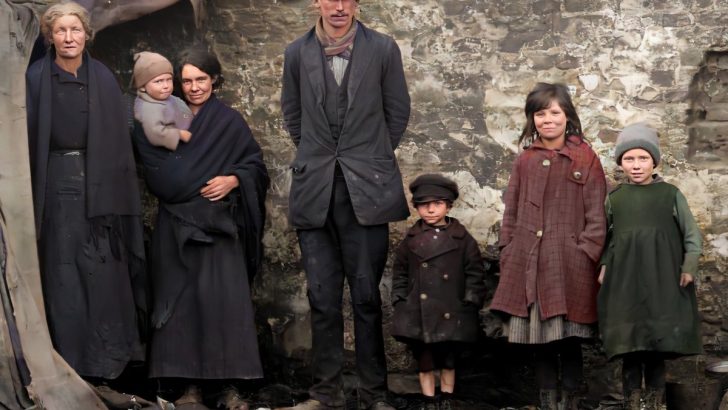Old Ireland in Colour
by John Breslin and Sarah-Anne Buckley (Merrion Press, €24.95/£22.90)
The idea of this book will delight many people, and it should prove to be a huge Christmas time bestseller.
The creators have taken a wide range of historical photographs, some very familiar already in monochrome, others little seen. These have been colourised, admittedly with great expertise. To “see the past in colour”, it is claimed, makes it more “real”.
Colourisation was introduced originally to extend the life of popular Hollywood movies by using a computer to add colour to each image. The early attempts were appalling: does one really want to see The Maltese Falcon in colour?
But since then we have had the Great War colourised and many other such like projects on television.
I cannot deny the results are popular and profitable. But a critic exists not to court popularity, but to make known his doubts about a book as well. This, as I say, will be a popular book. But will that make a good book, or indeed a moral book? I believe that photographs and films are historical documents. They should not be tampered with in this way to make them ‘more real’, ‘more interesting’. Colourisation makes images more popular but untrue.
Take for instance the third picture in the book, a simple one of a housewife making bread on her kitchen table. It is very attractive. But one quickly realises that the colour of the two mixing bowls is quite wrong. Historically these bowls were in fact a lighter creamier colour. The colour additions are chosen by the renovators: they are not a record of reality.
Of course, some people like their history all dressed up, the sort of thing that the engaging and hyper-active Lucy Worsley does so well on television, play-acting a Tudor tyrant. By all means buy and enjoy this book. But be aware it is not a real historical record.
In this matter I have to admit I am a puritan: but the process confuses people about the historical developments of colour photography and printing. Back before the Great War the National Geographic made regular use of autochromes, one of several systems in the early 1900s; they were real colour photographs of the period, but what colourisation provides is not.
We simply cannot change the past at a whim to make it more attractive: many aspects of the past, as all grown-up people realise, were very unattractive.


 Peter Costello
Peter Costello
